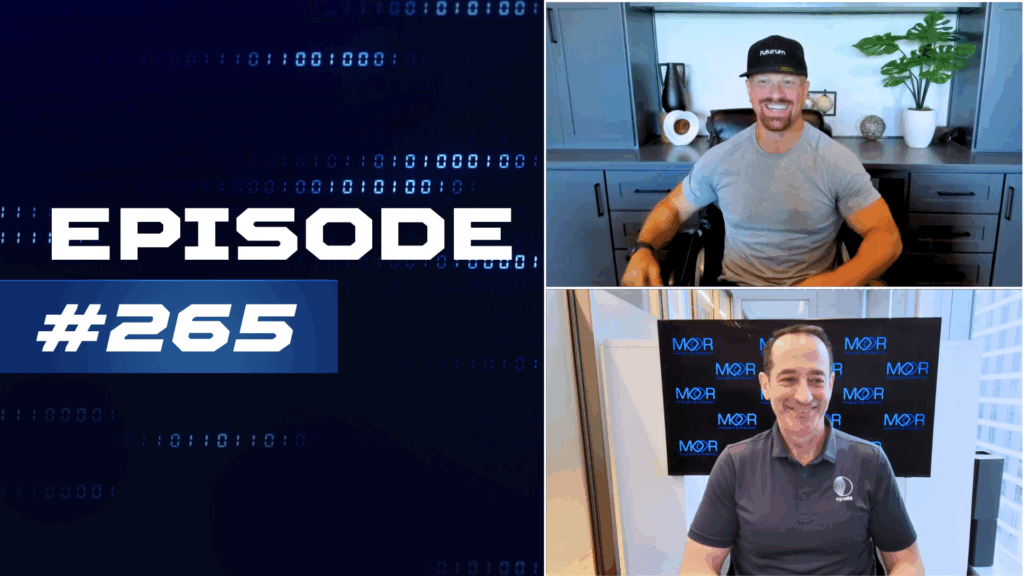The News: Dell Technologies announces financial results for its fiscal 2024 third quarter (Q3). Revenue was $22.3 billion, down 10% year-over-year (YoY). The period marked Dell’s fifth straight quarter of declining sales on a YoY basis. The company generated operating income of $1.5 billion and non-generally accepted accounting principles (non-GAAP) operating income of $2 billion, down 16% and 17% YoY, respectively. Diluted earnings per share (EPS) was $1.36, and non-GAAP diluted EPS was $1.88. Cash flow from operations for Q3 was $2.2 billion, driven by profitability and strong working capital performance. The company has generated $9.9 billion of cash flow from operations throughout the past 12 months.
Dell ended the quarter with remaining performance obligations of $39 billion, recurring revenue of $5.6 billion, up 4% YoY, and deferred revenue of $29.1 billion, up 7% YoY, primarily due to increases in software and hardware maintenance agreements. The company’s cash and investment balance was $9.9 billion. The full press release is available on Dell’s quarterly results portal.
Dell Q3 FY24 Earnings Show Strength in AI Demand But Sluggish Recovery
Analyst Take: Two steps forward, one step back seems like an adequate theme to summarize Dell’s results for its Q3 FY 2024. Overall, revenue for the quarter was $22.3 billion, down 10% YoY, but also down sequentially from Q2 FY 2024’s $22.9 billion. The sequential growth I was hoping to see again this quarter stalled out after Q2, reflecting the convalescing pains of a PC market still working to fully recover from last year’s slump. While disappointing, an interruption in quarter-over-quarter (QoQ) growth is par for the course at this point. So long as the recovery throughline remains constant, quarterly hiccups along the way should not be anything to worry about.
Client Solutions Group: CSG delivered Q3 revenue of $12.3 billion, down 11% YoY and 5% sequentially. Note that Q2 FY 2024’s $12.9 billion revenue for CSG was down 16% YoY, compared with Q3 FY 2024’s 11%, suggesting that while QoQ growth was negative in Q3, YoY performance continues to move in the right direction, albeit at a snail’s pace. Commercial client revenue was $9.8 billion, and Consumer revenue was $2.4 billion. Operating income was $925 million.
This quarter’s commercial client revenue landing at $9.8 billion (compared with Q2 FY 2024’s $10.6 billion) was perhaps the most disappointing number this quarter, especially given that the commercial client business generally delivers such a significant share of Dell’s PC revenue. While the enterprise is still sitting on a decent volume of inventory, and concerns about a possible recession (however justified or not they may be) persist, I suspect that another reason we are not seeing more PC market pickup on the commercial side is that ITDMs might be waiting for the next generation of AI-enhanced PCs (AI PCs) to enter the market before pulling the trigger on PC upgrades prematurely. If that is the case, we could see Q4 numbers lag again before starting to pick up and gather momentum in Q1 and Q2 FY 2025.
Consumer revenue for the quarter was $2.4 billion, which was flat QoQ, so no concerns there. Operating income was a bit lower than Q2’s $969 million, but again, no surprises there given the rest of the period’s performance.
It is worthy of note that worldwide PC shipments in Q3 2023 were down 9% YoY (landing around 64.2 million units), so the problem is not a Dell-specific problem. Dell rounded out the Top 3 PC vendors (behind Lenovo and HP but still easily beating Apple).
Infrastructure Solutions Group: ISG Q3 FY 2024 revenue came in at $8.5 billion, down 12% YoY but flat sequentially, so although we did not see growth QoQ, performance looked stable. Some good news with servers and networking revenue, however, grew from $4.3 billion last quarter to $4.7 billion. That 9% sequential growth was driven by AI-optimized servers, propped up by demand strength in unstructured data solutions and data protection. Storage revenue backslid a bit to $3.8 billion, down 8% sequentially from last quarter’s $4.2 billion, but still fueled by continued demand for PowerStore (Dell’s leading midrange storage array) and PowerFlex (Dell’s software-defined storage). Operating income was $1.1 billion, a slight increase from Q2’s $1 billion.
Judging by the past two quarters, Dell’s growing generative AI solutions portfolio continues drive strong top-line growth. We particularly like Dell’s Validated Design for Generative AI with NVIDIA for Model Customization, which delivers pre-trained models that extract intelligence from data (which keeps enterprises from having to build their own models from the ground up). The solution, which now provides support for model tuning and inferencing can be powered either by the Dell PowerEdge XE9680 AI server or the Dell PowerEdge XE8640, with NVIDIA Tensor Core GPUs and NVIDIA AI Enterprise software options that open up access to frameworks, pre-trained models, and development tools (like NVIDIA’s NeMo framework). Note that AI-optimized servers make up about 20% of Dell’s server mix, and we expect that increasing demand for AI-optimized server solutions will continue to help Dell accelerate its recovery into FY 2025.
Key Growth Opportunities Across Dell’s Solutions Portfolio Q3 FY 2024 Highlights
Dell nonetheless continued to make progress with the expansion of its solutions portfolio to help customers meet their performance, cost, and security requirements across clouds, on-premises, and at the edge. The Dell Generative AI Solutions portfolio expanded with new on-premises offerings that make generative AI implementations simpler with high-performing IT infrastructure, multicloud access, and professional services.
- ObjectScale XF960: Dell’s all-flash, scale-out appliance for generative AI and real-time analytics based on Dell’s software-defined object storage software, can run on Linux and Red Hat Open Shift on PowerEdge servers.
- Dell’s collaboration with Meta: Enables customers to deploy Meta’s Llama 2 models on-premises with Dell’s Generative AI portfolio of IT infrastructure, client devices, and professional services.
- Dell’s collaboration with Hugging Face: Empowers enterprises to create, fine-tune, and implement their own open source generative AI models with the Hugging Face community on Dell infrastructure products and services.
- Dell APEX Cloud Platform for Microsoft Azure: Dell’s answer to simplifying the hybrid cloud experience by helping customers extend Azure to datacenter and edge locations.
- Dell APEX Cloud Platform for Red Hat OpenShift: This fully integrated application delivery platform purpose-built for Red Hat OpenShift is designed to help customers deploy, manage, and run containers alongside virtual machines on-premises.
- The Precision 7875 Tower: Dell’s most scalable and powerful AMD processor-based workstation lets companies develop and fine-tune complex generative AI models locally before deploying them at scale.
Key Takeaways
Two steps forward, one step back is still a step forward, and while Dell’s path to recovery in Q3 FY 2024 looked mostly stalled, the market’s shift to AI-enabled solutions should start providing significantly more uplift in the coming year. Recoveries are not always linear, especially this early in the process. Dell warned that both CSG and ISG revenue could remain flat sequentially in Q4 FY 2024, which is consistent with our AI PC hypothesis. AI PCs aside, IT spending by corporate and global enterprise customers is still struggling to find consistent tailwinds and that stop-and-go rhythm is likely to persist into the next quarter.
I am encouraged that servers and networking business was up 9% sequentially, however, driven predominantly by interest in generative AI. I believe this gives a glimpse into the thread of opportunity going into the next year, both for Dell’s ISG business and on the CSG side of the business with AI PCs. All in all, sluggish demand remains an industry-wide challenge, and does not reflect a Dell-specific problem. Dell still looks well-positioned to take full advantage of the momentum of generative AI disruption, both in the cloud and on devices, especially PCs.
Daniel Newman and his co-host of The Six Five Webcast, Patrick Moorhead of Moor Insights and Strategy discussed Dell’s earnings in their latest episode. Check it out here and be sure to subscribe to The Six Five Webcast so you never miss an episode.
Disclosure: The Futurum Group is a research and advisory firm that engages or has engaged in research, analysis, and advisory services with many technology companies, including those mentioned in this article. The author does not hold any equity positions with any company mentioned in this article.
Analysis and opinions expressed herein are specific to the analyst individually and data and other information that might have been provided for validation, not those of The Futurum Group as a whole.
Other insights from The Futurum Group:
Dell Q2 2024 Earnings: Growth Points to End of Post-COVID Slump
Author Information
Olivier Blanchard is Research Director, Intelligent Devices. He covers edge semiconductors and intelligent AI-capable devices for Futurum. In addition to having co-authored several books about digital transformation and AI with Futurum Group CEO Daniel Newman, Blanchard brings considerable experience demystifying new and emerging technologies, advising clients on how best to future-proof their organizations, and helping maximize the positive impacts of technology disruption while mitigating their potentially negative effects. Follow his extended analysis on X and LinkedIn.





